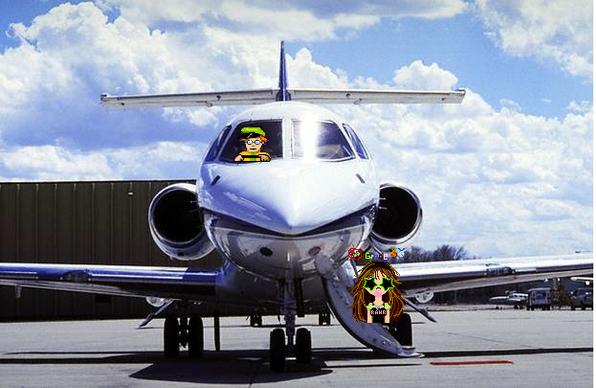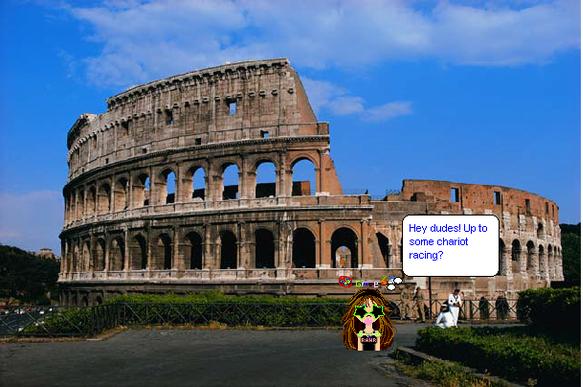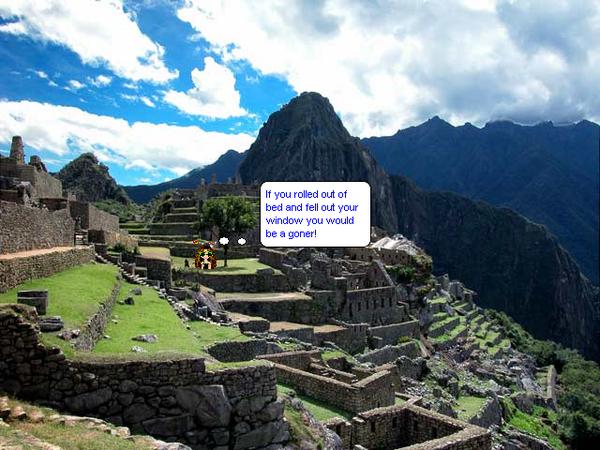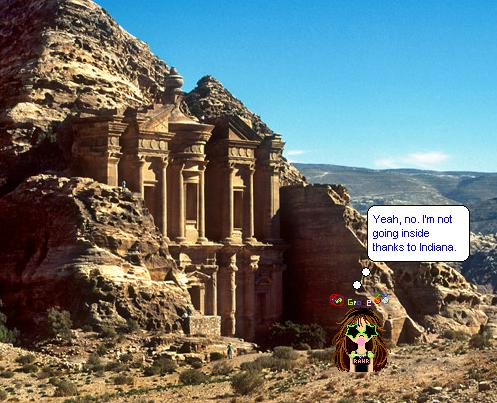This is a question I constantly ask myself, "What are the seven wonders of the new world?" So, being the adventurous person I am I climbed onto my secret jet and took flight.

Literally!
So the first stop on our magnificent journey is to Chichen Itza.
This magnificent structure in located in Yucatan, Mexico in a Mayan area. This is the most important and historical area of Mayan civilization according to modern archaeologists. Why? Well, the ruins of this ancient place is divided into two groups. The first belongs to the classic Maya period between the seventh and tenth centuries in A.D. The other group belongs to the Mayan-Toltec period between the tenth and thirteenth centuries in A.D. What made this a wonder of the new world? It has amazing carvings in most of its buildings and these structures are huge! How could a Mayan civilization with no technology build this?
The most famous structure in the Chichen Itza is its pyramid, the El Castillo. Archaeologists believe it was built for astronomical purposes. Why? No one knows.

So after I fell . . . I mean walked down off of El Castillo I hopped into my plane with Bob and we took off to our next destination: Christ the Redeemer
Christ the Redeemer is a huge statue of Jesus Christ with his arms outstretched. If you look at it from a distance it looks like a cross. The huge structure is located in Rio de Janeiro, Brazil.
The statue is also located on a very high and steep mountain called Corcovado. In 1859 a man named Pedro Maria Boss arrived at the foot of Corcovado and marveled at its beauty. He was so thrilled by the mysteriousness of the mountain he suggested placing a religious structure at the top in honor for his Vincentian princess, Princess Isabel. And that was when the idea for Christ the Redeemer began. So in 1922 the hard road to build Christ the Redeemer began. Nine years later, 1931, the statue was finished. It now stands with lighting at night and a recently added elevator in 2002. People say it is the most beautiful right before the sunsets!

It took a while for Bob to stop crying after he saw Christ the Redeemer in the sky (he just though it was so beautiful) but I was so amazed we were already onto our third stop: the Colosseum (or Coliseum)!
The Colosseum is a huge, ancient stadium located in Rome, Italy. Archaeologists believe it was used for chariot races.
This huge structure was built almost 1,920 years ago! Wow! But the stadium was abandoned and was used for a fortress for medieval clans of ancient Rome. Later, it was turned into a tourist site. Big surprise there, eh?

So after successfully driving a horse into a pot hole Bob and I took off to the fourth wonder of the world. Where? To the Great Wall of China of course!
The Great Wall of China winds through deserts, grasslands, mountains, and plateaus all throughout China. This wall isn't like the wall in front of your computer. Oh no. This wall is made out of stone and stretches over 6,700 kilometers (4,163 miles)! It is almost 2000 years old. A pretty strong wall you would say, right? But some parts of the wall are missing, sadly. It was a wall for defense, to keep enemies from invading. It was just a bunch of separate walls back then. But Emperor Qin Shihuang joined the walls in order to have most of China protected. The Great Wall of China is now a proud monument to show off China's bravery and strength.

Off to the fifth wonder! Machu Picchu!
So what is this cozy little wonder? Well, it's an ancient Inca civilization on the Andean mountains 9,060 feet above sea level in Cuzco, Peru. It was built around 1400 A.D. and the ruins were rediscovered in 1911 by Dr. Hiram Bingham. Archaeologists believe it was used as a secret ceremonial city. There are human remains. The skeletons of 10 females and 1 male helps give up what life was like living on a steep mountain. (Not the smartest idea in the world . . .)

Bob and I packed up our gear once again and moved on to Petra located in Jordan.
You may recognize it from the third Indiana Jones movie. No, this does not have an old knight with a magical cup located inside. It is an ancient, lost city that was established in the early sixth century B.C. by the Nabateaens Arabs. Petra was later put into the hands of the Romans in 100 A.D. But then it was abandoned leaving it open to the public until the 1900's.

Bob and I said our farewells and headed off to Agra, India to visit our last wonder before heading back to Whyville. So here we are at the Taj Mahal palace!
The Taj Mahal palace was built by a Muslim, Emperor Shah Jahan in honor of his wife, Queen Mumtaz Mahal, who had died. It is has a tomb with the queen's grave in the lower chamber. And now her husband lies peacefully with her. The Taj Mahal took 22 years to build. It was finished in 1648 C.E. It stands on a platform and is considered the most beautiful sight in India.

So Bob and I came pack to Whyville and I was stuck on the bus again. We both had a great adventure, but we were both glad to be back in good ol' Whyville.
Until my next adventure,
msof57
Author's Note: Sorry if there isn't very much information on some of the wonders' history. Some websites didn't have very much information.
Sources: For finding the 7 wonders of the new world: http://en.wikipedia.org/wiki/New_Seven_Wonders_of_the_World
Chichen Itza: http://www.mnsu.edu/emuseum/archaeology/sites/meso_america/chichenitza.html
Christ the Redeemer: http://www.copacabana.info/Christ-the-Redeemer-history.html
Colosseum: http://www.the-colosseum.net/idx-en.htm
Great Wall of China: http://www.travelchinaguide.com/china_great_wall/
Machu Picchu: http://www.sacredsites.com/americas/peru/machu_picchu.html
Petra: http://www.raingod.com/angus/Gallery/Photos/MiddleEast/Jordan/Petra/
Taj Mahal: http://www.islamicity.com/culture/Taj/default.htm